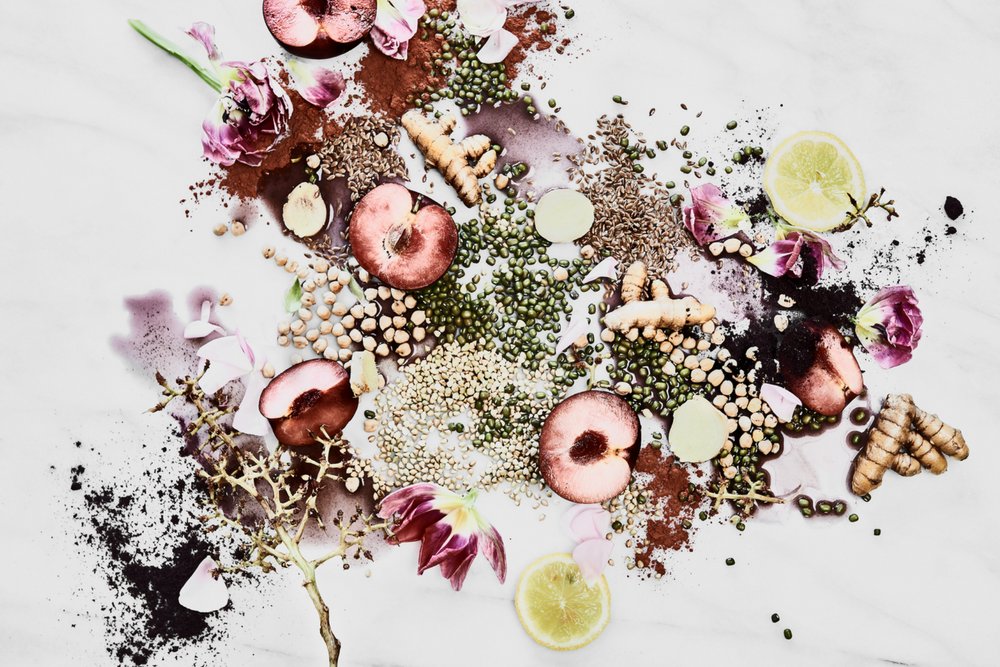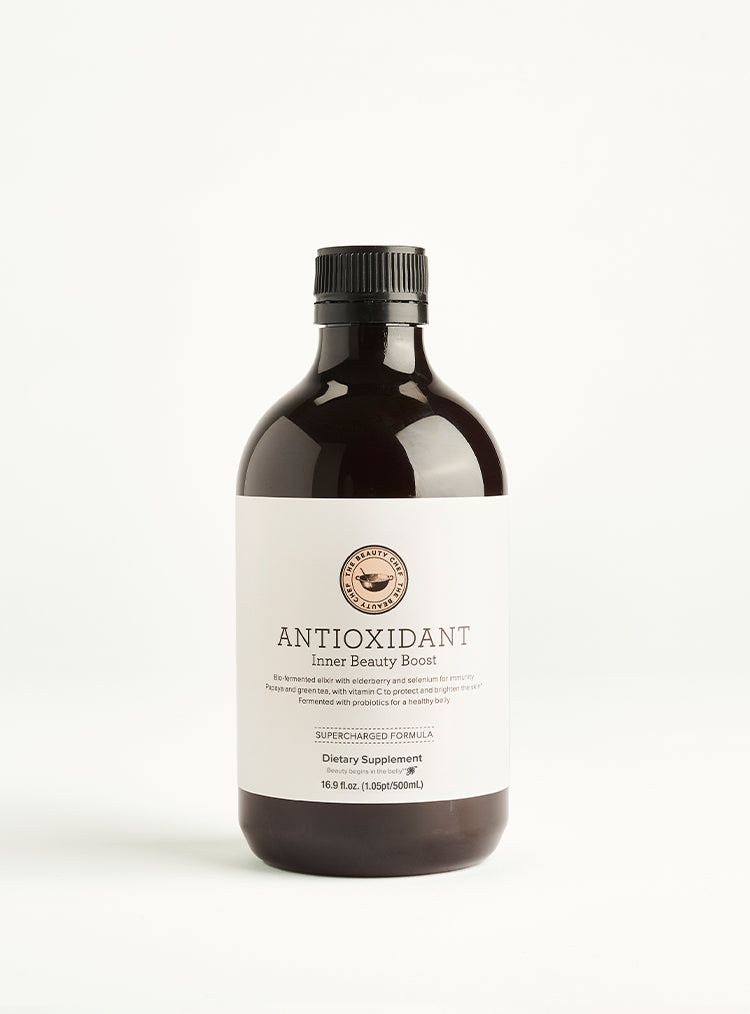
While external protection is important, sun protection is also an inside job. Let's talk about edible sunscreens; the foods that can help protect you against UV radiation from the inside out.
Edible sunscreens
Antioxidants
Plant foods are rich in antioxidants – fruits and vegetables, nuts, leafy greens, extra virgin olive oil and legumes – and therefore boast sun protective properties.
Basically, the antioxidant phytonutrients found in plant foods scavenge free radicals, reducing the oxidation caused by sun exposure that damages our skin’s DNA and breaks down collagen and elastin.
Certified Organic crops contain more antioxidants, according to this review of 343 scientific studies.
Fruits and vegetables are also rich in skin-loving minerals and vitamins, which help maintain healthy, well-nourished and protected skin.
Eat the rainbow
Eat the rainbow of plants – because vibrantly coloured fruits and vegetables are higher in antioxidants and other nutrients – and each individual food boasts its own unique group of these protective plant compounds. By eating a variety of different coloured plants you get a broader range of benefits.
Think reds (tomatoes, radishes and watermelon) for lycopene, greens (broccoli, cabbage, Brussel sprouts) for sulforaphane, orange colours (carrots, sweet potatoes and oranges) for betacarotene and purples (blueberries, cherries, beetroots, pomegranates and red cabbage) for anthocyanins.
Vitamins C, E & Pro-vitamin A
Along with mopping up free radicals, Vitamin C helps boost your levels of protective glutathione – an antioxidant your body produces to protect itself against free radical damage. You can get plenty of Vitamin C from kiwi fruits, leafy greens, red capsicum, rosehip, papaya, strawberries, oranges, grapefruits and watercress.
The acerola cherry in one serve of BODY Inner Beauty Powder delivers 100 percent of your recommended daily intake of vitamin C to help protect your body against inflammation and cellular ageing.
Vitamin E helps your body recycle glutathione and rich sources include almonds, avocado, extra virgin olive oil, wheat germ, soy and sunflower seeds. Vitamin E is also found in ANTIOXIDANT Inner Beauty Boost.
Asparagus is another rich food source of powerful antioxidant glutathione which also helps fight inflammation, one of the main culprits when it comes to premature ageing of the skin and body.
Compounds known as tocotrienols (found in oats, barley and rye) belong to the vitamin E family also help neutralise free radical activity and absorb some UV radiation.
Dunaliella salina, a nutrient dense microalgae found in GLOW Inner Beauty Powder is rich in a powerful antioxidant, betacarotene, or provitamin A. This skin-loving and health-giving powder is also a rich source of protective phytonutrients derived from 24 bio-fermented wholefoods.
Matcha, Cacao & Tea
Your daily cup of anti-inflammatory green tea or matcha green tea powder (equivalent to 10 cups of green tea) in BODY Inner Body Beauty Powder contains the catechin known as EGCG (epigallocatechin gallate) which helps to counteract the damaging effects of free radicals triggered by exposure to pollution, UV rays, radiation, and chemicals, which can lead to cell and DNA damage. Tea consumption has also been linked to a reduced risk of skin cancer.
Cacao or dark chocolate (go for at least 70 per cent) contains antioxidants called flavonoids which may protect your skin against sun damage.
And a study by the University of Arizona found a lemon peel may have a protective effect against squamous skin cancer cells.
Omega-3s & Hydration
A diet rich in Omega 3 essential fatty acids will also reduce inflammation and help protect your skin from free radical damage. Good sources of Omega 3's include salmon, sardines, mackerel, algae, flax, hemp and chia seeds.
Finally, drink plenty of water and stay well-hydrated, especially after sun exposure to maintain healthy NMF (natural moisturising factors) to protect your skin from dehydration.
It is important to remember that food alone is not enough to protect your skin from UV damage, so make sure you read our previous blog post about ‘Choosing the right sun protection’.
Visit The Digest for more beauty and wellbeing inspiration.



